The Lynd Cross was the 14th-century name of the junction between the Bishopric and Springfield Road, now the site of this Wetherspoon pub. The first record of a building at this address is in the 1930s, when it was the Old Horsham Bakery.
Prints and text about Horsham town criers.
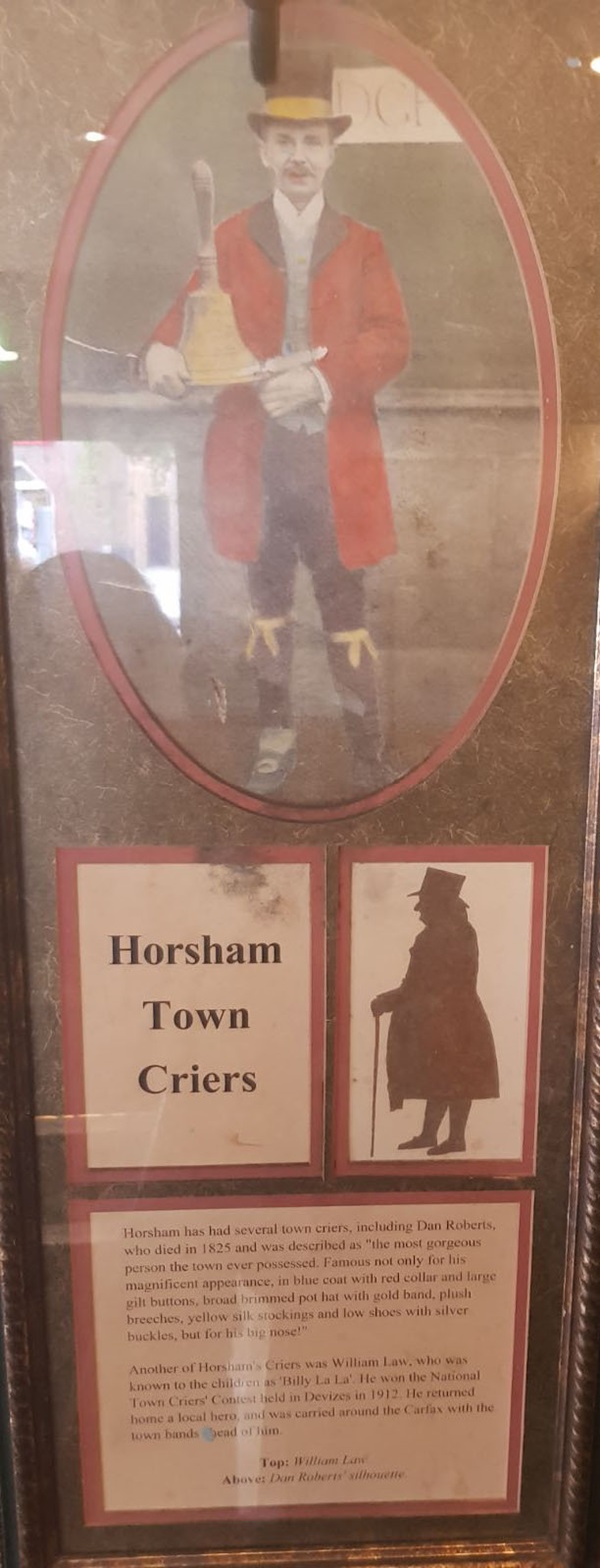
The text reads: Horsham has had several town criers, including Dan Roberts, who died in 1825 and was described as “the most gorgeous person the town ever possessed. Famous not only for his magnificent appearance, in blue coat with red collar and large gilt buttons, broad brimmed pot hat with gold band, plush breeches, yellow silk stockings and low shoes with silver buckles, but for his big nose”.
Another of Horsham’s criers was William Law, who was known to the children as Billy La La. He won the National Town Criers’ Contest held in Devizes in 1912. He returned home a local hero, and was carried around the Carfax with the town bands ahead of him.
Top: William Law
Above: Dan Roberts’ silhouette.
A print and text about the Earl of Surrey.
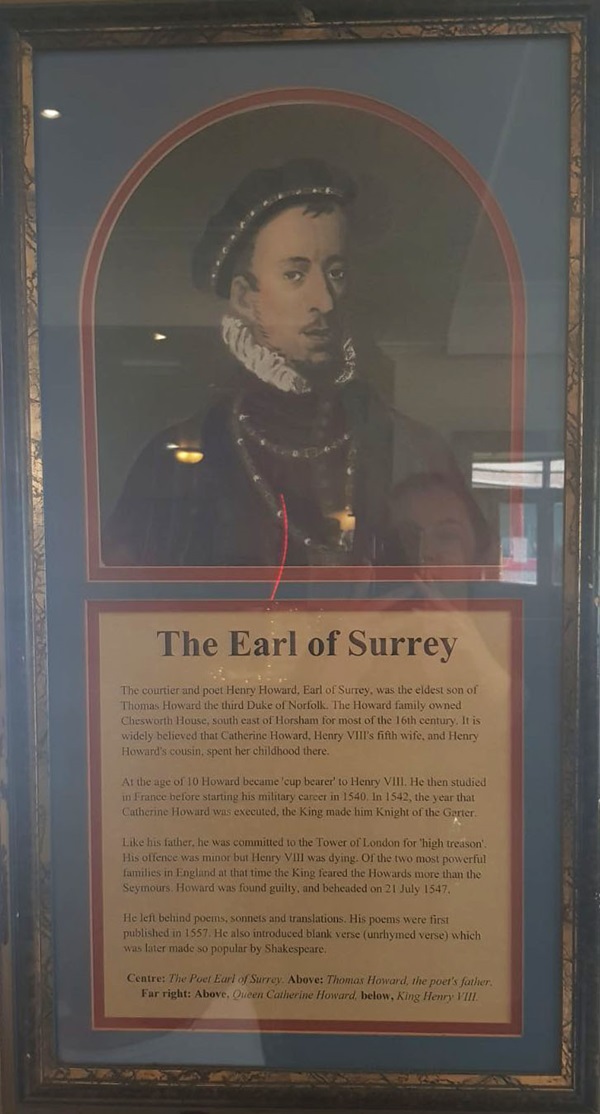
The text reads: The courtier and poet Henry Howard, Earl of Surrey, was the eldest son of Thomas Howard the third Duke of Norfolk. The Howard family owned Chesworth House, south east of Horsham for most of the 16th century. It is widely believed that Catherine Howard, Henry VIII’s fifth wife, and Henry Howard’s cousin, spent her childhood there.
At the age of 10 Howard became ‘cup bearer’ to Henry VIII. He then studied in France before starting his military career in 1540. In 1542, the year that Catherine Howard was executed, the king made him Knight of the Garter.
Like his father, he was committed to the Tower of London for high treason. His offence was minor but Henry VIII was dying. Of the two most powerful families in England at that time the king feared the Howards more than the Seymours. Howard was found guilty, and beheaded on 21 July 1547.
He left behind poems, sonnets and translations. His poems were first published in 1557. He also introduced blank verse (unrhymed verse) which was later made so popular by Shakespeare.
Above: Thomas Howard, the poet’s father.
Prints and text about Alf Shrubb.
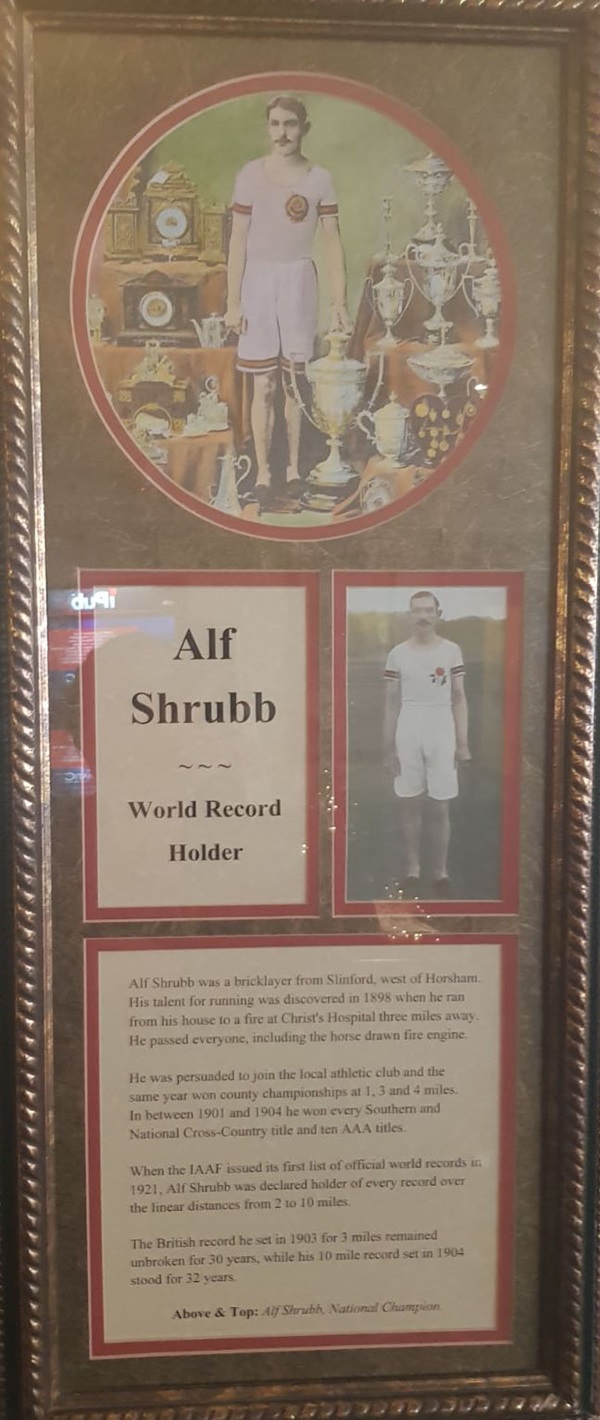
The text reads: Alf Shrubb was a bricklayer from Slinford, west of Horsham. His talent for running was discovered in 1898 when he ran from his house to a fire at Christ’s Hospital three miles away. He passed everyone, including the horse drawn fire engine.
He was persuaded to join the local athletic club and the same year won county championships at 1, 3 and 4 miles. In between 1901 and 1904 he won every Southern and National Cross Country title and ten AAA titles.
When the IAAF issues its first list of official world records in 1921, Alf Shrubb was declared holder of every record over the linear distances from 2 to 10 miles.
The British record he set in 1903 for 3 miles remained unbroken for 30 years, while his 10 mile record set in 1904 stood for 32 years.
Above and top: Alf Shrubb, National Champion.
Illustrations and text about Horsham fairs.
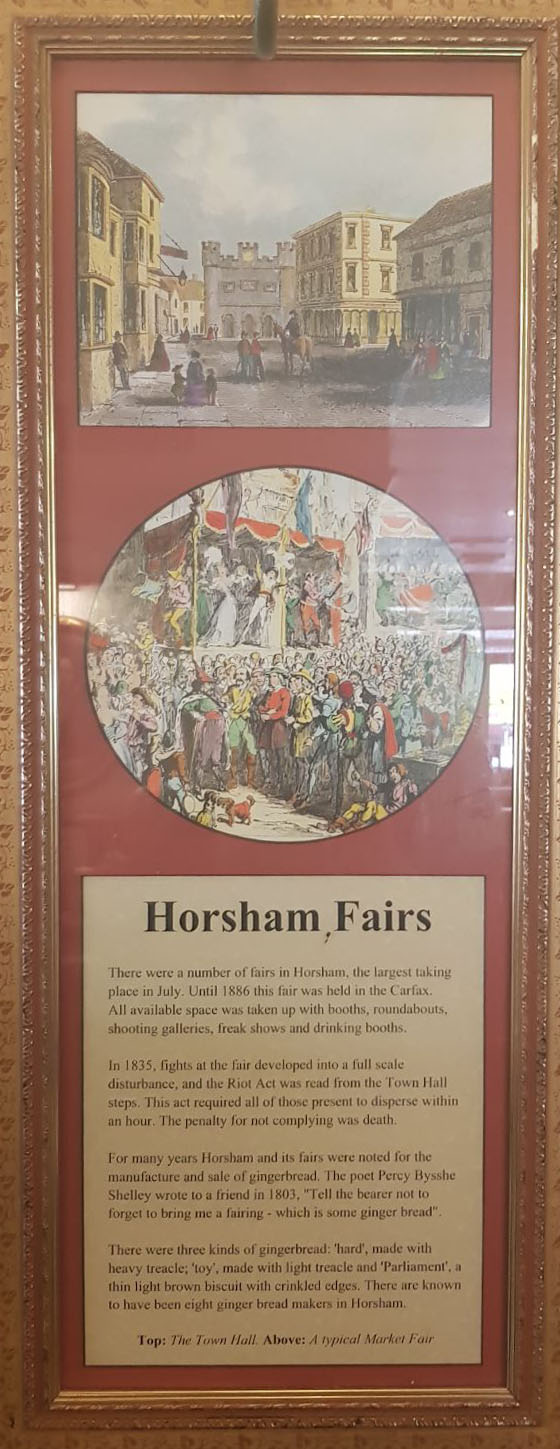
The text reads: There were a number of fairs in Horsham, the largest taking place in July. Until 1886 this fair was held in the Carfax. All available space was taken up with booths, roundabouts, shooting galleries, freak shows and drinking booths.
In 1835, fights at the fair developed into a full scale disturbance, and the Riot Act was read from the Town Hall steps. This act required all of those present to disperse within an hour. The penalty for not complying was death.
For many years Horsham and its fairs were noted for the manufacture and sale of gingerbread. The poet Percy Bysshe Shelley wrote to a friend in 1803, “tell the bearer not to forget to bring me a fairing – which is some ginger bread”.
There were three kinds of gingerbread: ‘hard’, made with heavy treacle; ‘toy’, made with light treacle and ‘parliament’, a think light brown biscuit with crinkled edges. There are known to have been eight gingerbread makers in Horsham.
Top: The Town Hall
Above: A typical Market Fair.
External photograph of the building – main entrance.
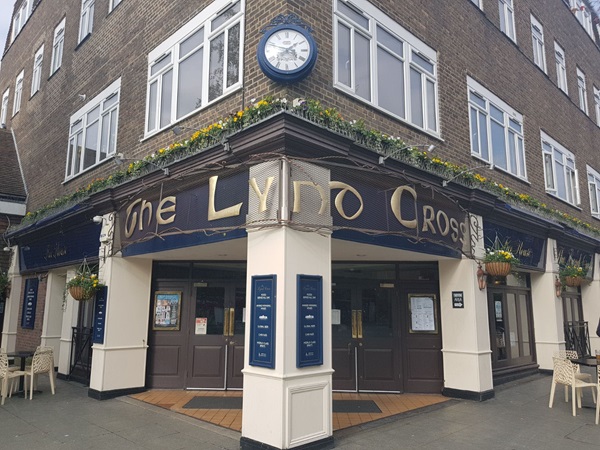
If you have information on the history of this pub, then we’d like you to share it with us. Please e-mail all information to: pubhistories@jdwetherspoon.co.uk